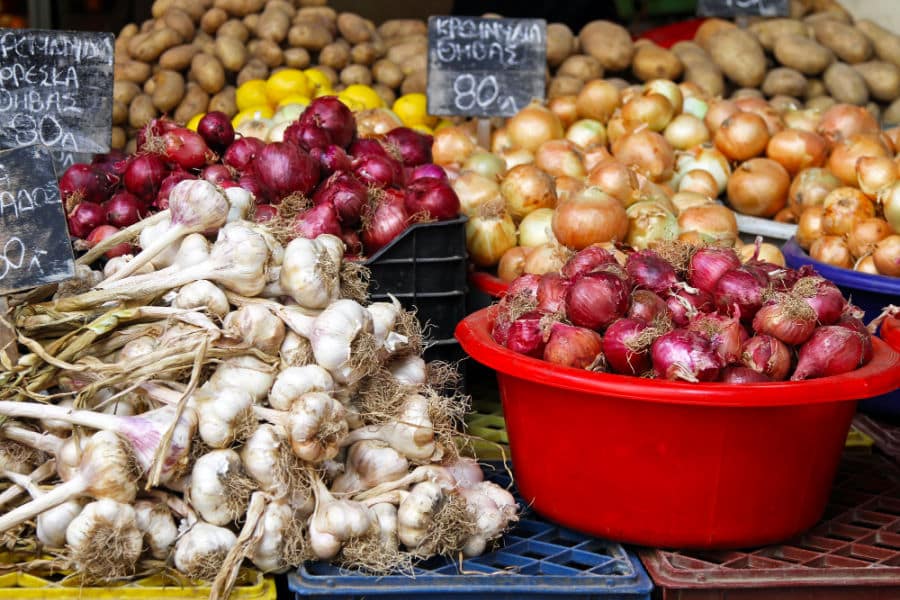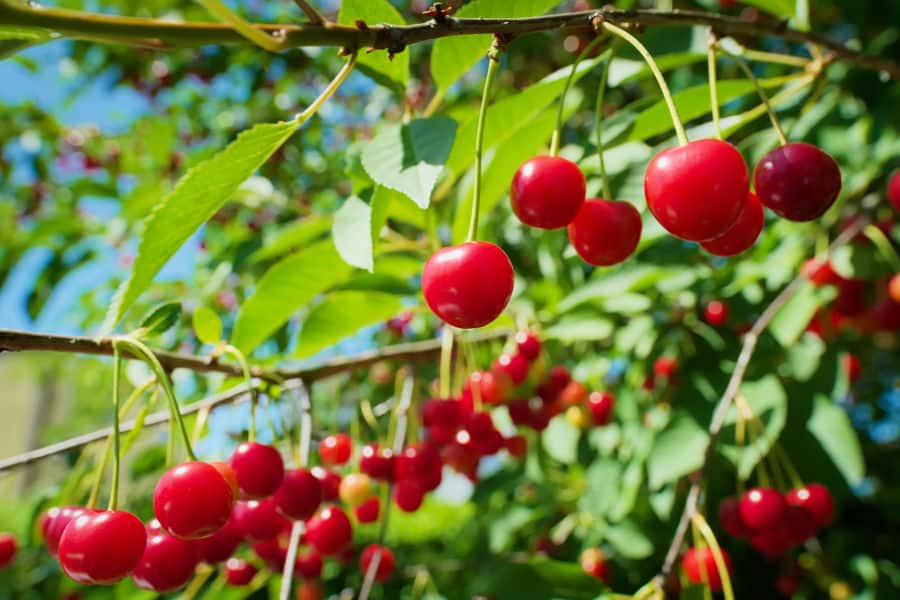
What superfoods can you grow at home?
Many studies have shown that there’s a connection between your diet and certain illnesses. Adding more fruit, vegetables, and other nutrient-rich plant foods to your diet has tremendous health benefits and can help prevent cancer, heart disease, and other diseases. It’s always good to live a balanced life and pay special attention to your consumption patterns.
Grow Superfoods at Home

Unfortunately, the delicious apples, oranges, and other vibrant colored food that sit glistening on the store shelves are often not the ones you need. Store-bought foods are often chemical-treated and have other preservatives added to enhance their shelf-life. Sourcing your superfoods straight from your garden helps you know you are consuming the best of nature with no artificial compounds added.
To learn of some of the superfoods that you can grow in your yard (or in a pot on your patio) that can help reduce your risk of getting cancer or other diseases, continue reading!
Benefits of Growing Blueberries

Blueberries are a superfood with tremendous health benefits! They also have a diverse number of uses - you can eat them raw, prepare jams and jellies out of them, bake them into pies, or cook them into desserts!
Packed with antioxidants, blueberries have high nutritional value and are rich in Vitamin C and Potassium.
Benefits of Growing Aronia (Chokeberry)

The new berry love ‘Chokeberry’ is a super-berry. It is hardy, easy to grow, and showcases a mesmerizing bloom and an interesting Fall color.
When compared to other fruit, Aronia has the highest levels of antioxidants. Growing these berries is always worth it as they are not only excellent health-wise but are pretty in looks and shape too. This focal shrub accents your landscape like no other tree! A quick online search can provide you with some delicious recipes featuring Chokeberries - the variety will have you amazed!
Benefits of Growing Spinach

Remember ‘Popeye, the Sailor Man’? The powerful cartoon character who sourced his energy from spinach? One of the truest storylines of all time, as spinach is packed with antioxidants, Vitamin A, Vitamin K, and many more nutrients that bring you a boost of energy.
Spinach is one of the top superfoods that help fight cancer. They have a fine dose of protein and vitamins that is helpful against bone problems. Spinach becomes available for plantation and harvesting during March and April for the Spring crop, whereas the October crop becomes available in September and October.
Benefits of Growing Tomatoes

There is a huge variety of tomatoes that you can plant; start from a seed or seedlings, protect them against cold, and ideally plant them outdoors during late Spring or early Summer.
Tomatoes stand out as a versatile superfood item – they contain Lycopene that is great for preventing heart diseases. They also contain antioxidants and many vitamins including Vitamin A, C, and E. Tomatoes can also easily be grown in a pot, so there’s no excuse that you don’t have enough space! And, let your kids grow their own super crops - this will help encourage them into eating the superfoods they grow!
Benefits of Growing Garlic & Onions

Let’s set aside the bad odor (and some tears) that both of these veggies bring on and rather focus on the good part. These tastemakers add much more than just the flavor punch to your plate. With immense health benefits, both onions and garlic are easy to grow and are recommended to be planted in early Spring or Fall.
Garlic has been used as a medicine for several diseases over hundreds of years. Its beneficial properties are well-researched and well-documented. In early times, doctors would suggest you swallow a garlic clove as a pill for many health problems.
Onions, belonging to the same family of ‘Alliums’, are no different and bring several health benefits to the table.
Benefits of Growing Tart Cherries

Tart Cherries might be a little too sour, but their health benefits exceed those of sweet cherries. Tart Cherry trees are hardier, self-fertile, and are easier to grow. A single cherry tree can be a beautiful focal point of your yard!
These little heart-shaped red fruits have a bunch of health benefits packed in. They stimulate brain functioning, heal muscles, and help you sleep well.
Benefits of Growing Cilantro & Parsley

Cilantro and Parsley often sound like twins, don’t they? For both of them, you will find ready-to-harvest plants or seeds. You can mix them into your existing flower beds, or you may even plant them in your vegetable or herb garden.
Cilantro & Parsley are dense in phytonutrients and flavonoids, along with Vitamins A, C, and E. They are also high-fiber additions to your cooking that aid digestion.
Benefits of Growing Brussels Sprouts

A vegetable that many enjoy on Thanksgiving and other holidays, Brussels Sprouts are typically planted in the Spring or the Fall (as late as November). For a Summer harvest, you can plant them as early as mid-March.
Brussels Sprouts are a cruciferous vegetable packed with lots of Glucosinolates. These sulfur-containing compounds are the starting point of cancer prevention in human bodies. Brussels Sprouts are high in fiber and are excellent at controlling cholesterol levels.
Benefits of Growing Peppermint

Peppermint is an easy-to-go-with vegetable that can grow in a pot or garden. You may stir this summer herb into your tea, smoothies, soups, or even cocktails.
Peppermint is popularly known for curing stomach aches and reducing stress. Peppermint is also an excellent pain reliever.
Benefits of Growing Broccoli

Broccoli can be harvested as a micro-green or as a sprout. This standard vegetable is super tolerant to cold weather and can be easily planted during early Spring (as early as mid-March).
Broccoli is one of the healthiest and most versatile vegetables. You may add it to your salads, diet plans or use it as a nutritional garnish to your daily meals. The vitamins and minerals stored in it are quite helpful in fighting cancer, weak bones, and unstable cholesterol levels.
Benefits of Growing Hibiscus

Tropical Hibiscus plants offer one of the most stunning blooms during Summer, featuring large, white, pink, red, or lavender shaded flowers followed by light green leaves. Not only is it a beautiful plant, but Hibiscus offers a number of health benefits too.
We all love the lemony flavor of Hibiscus flowers and leaves, don’t we? This citrus flavor comes from the high levels of Vitamin C packed within it. Add a few Hibiscus leaves or flowers to your tea and salads to enjoy a citrusy punch to your daily meals!
Bottom Line

There is absolutely no denial of the freshness packed in the fruits and vegetables that come straight from the yard. They are fresh, natural, and free of any artificial hazards.
And yes, let’s not look past the timeless benefits of gardening. Moving out in the yard, digging up a fine place, planting, and soaking in some sunlight in the process brings wonderful benefits to your health and mood. No wonder why gardeners are typically happy!
